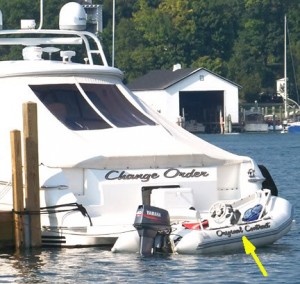Monthly Archives: March 2015
Cost vs. Speed
They say you can’t have your cake and eat it too. In construction, sometimes you can push to keep costs down or your can push to complete the job quickly, but it is difficult to make both happen at the same time.
On the surface, one would think that any good team should be able to complete a project cheap AND quick. But what happens if meeting a big deadline is more important than trying to reduce the budget of the project? When speed trumps cost, it sometimes makes sense to use strategies such as:
1) Developing construction drawings as soon as possible. Lesser important design details are often not required for permit review and can be issued to the team in architectural bulletins.
2) Let availability drive materials selection. Material arrival times can be the difference between a project that makes the deadline and one that doesn’t. On a typical project, the client would have the luxury to wait for the arrival of any essentially product that they choose. Projects with truncated schedules need to immediately rule skip to looking at quick ship products.
3) Sole source all vendors and contractors to avoid time intensive RFP and bid analysis processes. Typically on a fast-track project, the cost saved in the competitive bid process is far outweighed by the cost of taking the time to perform the exercise. Also, consider working with vendors who provide design-build or turn-key solutions.
4) Consider pre-fabricated components with to simplify. installation. While not a good fit on all projects, innovations in pre-fabricated building components have been shown to expedite schedules.
5) Perform overtime labor hours. While increasing labor resources to a project may seem like an obvious solution, clients often are quick to dismiss it as a strategy to achieve a fast-track schedule because the added costs associated. What clients fail to realize, is that labor has a huge impact on project schedule and that costs to add resources should be compared with the potential losses of a delayed completion.
While these strategies will sacrifice budget and quality goals, they can be useful in meeting a tight schedule demand. Sometimes making the sacrifice makes all of the difference.
How to Reduce Vacancy Downtimes
If you own, manage, or lease commercial real estate there is nothing worse than having a vacant suite that nobody wants. What can be done to reduce excessive vacancy downtimes?
If executed properly, space prep work can dramatically reduce this the time your suites stay empty and rent is lost. But what is the formula to success? Spending too much could ruin future deal economics while not spending enough might not make enough impact to lure interested tenants. Below are a few ground rules:
1) Plan your space prep before spaces become vacant. Be proactive and don’t wait to see what kind of interest the space will have. The space prep plans can always be put on hold or cancelled if a lease comes in sooner than expected.
2) Don’t waste money on new flooring. I’ve learned the hard way that a tenant can love a newly refurbished suite but only want to lease it if you rip out the brand new carpet you put in. Landlords lately have attempted to attract tenants by shelling out money to polish exposed concrete to create an industrial look. While it certainly creates a style that many tenants like, it isn’t for everyone and might not accelerate leasing or be the reason your space is chosen by a future user.
3) Demolish the obvious. It is important to demolish and abate anything that virtually every tenant will need removed for their future build-out. Don’t go too crazy with the sledge hammer when if comes to removing and improvements that could be reusable, but if you can’t envision another tenant reusing it, get it out.
4) Power up. Ensure the entire premise is well covered with necessary power outlets and lighting. New tenants often need to do electrical work before moving in and your space needs to be equipped.
An Architect’s Perspective on Today’s Trends in Office Interiors
We had the chance to speak with Jaclyn Guasco of Fennie + Mehl Architects (www.fm-arch.com) about today’s trends in office space designs. Jaclyn comes from a background in interior design and had some insightful thoughts to share:
The TI Tales: How do you take cues from the culture and style of your clients to make sure you show them a palate of finishes that they will can be excited about?
Jaclyn Guasco: The client’s culture informs everything – programming, architectural expressions within the space, design concepts and the finish palette. It’s our job to get to know our clients and to open up the dialogue with them in order to understand who they are and where they’re going.
TTT: Have you been working with any new flooring materials that are comparable in price to standard carpet?
JG: If there’s an opportunity, we love exploring the natural concrete or wood sub-floor on our projects. With open office configurations, carpet is a very popular acoustic-friendly choice, so there’s very rarely a project that doesn’t involve carpet in some way. Other materials, I’m always on the hunt for are woods, ceramic tile and earth-friendly rubbers and corks.
TTT: Aside from the shift we’ve seen in more open office environments, what other innovative trends have you started to see programmatically?
JG: The line between work life and personal life is becoming more and more blurred, providing a need for spaces in the workplace that support wellness and balance. These spaces range from privacy/ phone booths, cafes, bars, gyms, meditation rooms, yoga studios, massage rooms, bike storage and showers. We’ve found that having a choice in space is really empowering.
TTT: It seems like LEED for Commercial Interiors (LEED-CI) hasn’t taken off as well as LEED for New Construction (LEED-NC) and other LEED project types. Recognizing the time and budget constraints of tenant improvements, how do you foresee that future build-outs can either achieve this designation or simply be more sustainable?
JG: The new Title 24 requirements in the California Building Code are certain aspects more rigid than LEED-CI. Which means all future build-outs in California are required to be much more energy efficient moving forward. The need for immediate space and the cost of real estate in the Bay Area often take priority over other project parameters on commercial TI projects. That being said, I still find that LEED certification is an admirable achievement for any project in our industry.
TTT: Have you been using any new technologies to help you with your business that you weren’t using before 5 years ago?
JG: When it comes to new and emerging technologies, we’ve taken cues from our tech clients. Sharing architectural plans, meeting notes and project data on the cloud has proven to be really efficient. In addition, everyone in our office has an iPad and it’s really streamlined our note-taking and image capturing process for project meetings and site visits.
Thanks, Jaclyn!
How to Ensure Your Lease Is Bulletproof for Construction
There is nothing worse than having a landlord and tenant execute a lease document only for a big argument to come up afterwards. I’ve been part of deals with poorly written leases that allow for too many grey areas or topics that are simply not addressed. The result is that the landlord-tenant relationship is severed right as it begins. Here are some tips that can allow for a lease document to set expectations properly so nobody has hard feelings down the road:
1) Develop a design concept that is detailed enough for an accurate budget. Landlords and tenant often are too focused on getting a lease transaction done and not as concerned with ensuring that the Tenant Improvement Allowance (TIA) is appropriate for the tenant’s needs. It should be insisted that a design is developed to allow for an estimator to assign a budget to the project that will fall within 10 to 15% of the actual project costs. If the TIA is based off of pricing down from a design off the back of a napkin, it is likely that the TIA will be too high or too low. “Garbage in, garbage out”.
2) Clearly identify who is paying for what. In a blog post I wrote several months ago, I gave a rough outline for what landlords often pay for; though I cautiously said that this can vary based on market conditions, existing premises conditions and lease economics. Landlords and tenants must properly vet out the entire scope of work. Things that often get forgotten about are pertain to the building core and perimeter conditions.
3) Make sure the lease language clearly identifies necessary timelines and deliverables. Both tenants and landlords need to make sure that they aren’t going to be painted into a corner and that they can make commitments. One common mistake is the lease is silent on when a landlord is required to complete their work to prepare for the tenant’s work. If the landlord is slow on completing this and the tenant needs to be out of their old building by a particular time, conflict is sure to arise.
4) Bring your project team in as early possible to make sure lease terms are all do-able. Imagine going to a restaurant and ordering a pulled pork sandwich from the waiter. The waiter then hollers to the cook in the kitchen, “One pulled pork!” The cook then shouts back, “Pork? This is a kosher deli!” In the same sense, a landlord or tenant shouldn’t commit to the construction section of their lease until they have consulted with construction and design professionals who are sure they can make it happen.
As a project manager, many fully executed leases have been placed on my desk in my career where had a gotten involved from the start I could have prevented lots of tenant and landlord frustration.







